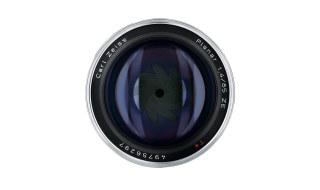ZEISS Planar T* 1,4/85
Revel in the moment.

Pinpoints of light in the background envelop the individual and conceal a mysterious message. The ZEISS Planar T* 1,4/85 lens brings out the best in its subject, while masterfully manipulating both sharpness and soft focus.
This classic portrait lens captures people in their surroundings, playing with a range of sharpness, soft focus and contrast effects. Its distinctive circular bokeh is a crucial creative element. The ZEISS Planar T* 1,4/85 produces very high quality and shallow depth-of-field when wide open. This is especially suitable for isolating the main subject from the foreground and background. This lens is also suitable as a general-purpose lens.
ZEISS Classic lenses – a tradition of excellence
The ZEISS Classic lenses have enjoyed an outstanding reputation with photographers all over the world for many years now – and rightly so. The solid all-metal mount ensures constant functionality and image performance, regardless of the number of photographs taken. Manual focusing promotes creativity in the design of the image.
Ideal aperture with nine blades
Photographers want to guide the observer through the image. Minimal depth of focus is often used as a design element. This keeps the background intentionally blurred to keep the attention of the observer on the main subject. These different representations of the blurred areas, as well as the quality of the transition, are referred to as the Bokeh of a lens. The finely tuned features of the optical design on ZEISS SLR lenses ensure a particularly harmonious effect of the blurred areas of the image. The nine diaphragm blades and the resulting, virtually circular aperture on ZEISS SLR lenses are crucial to favorable rendition of highlights in the fore and background.
Excellent image quality
The range of ZEISS T*® lenses offers the highest possible standards in terms of performance, reliability and, of course, image quality. Quite simply, they are superior in every way. You can count on highly advanced flare control for crisp and brilliant images, for example. And virtually zero geometric distortion, ensuring precise accuracy when reproducing shapes – especially useful when photographing products and architecture.
Elaborate stray light reduction
Rich, vibrant colors are vital to creating a lasting impression. Stray light in the lens, however, would lead to a brightening of the image, which is particularly visible in shadow areas. Image contrast is lowered; the image appears dull and bleached. We combine various, elaborate techniques to reduce unwanted stray light. For example, all lens elements are coated with the famous ZEISS T*® anti-reflective coating. Additionally, a jet black special paint is applied by hand to all lens element edges to ensure that reflections are prevented from the start.
Precise manual focus
Manually focusing a lens means controlling the image result from your fingertips. A good ergonomic design makes all the difference. ZEISS lenses stand out with their large rotation angle which enables precise focusing. Changes are immediately visible in the viewfinder. The high-quality focusing mechanism moves smoothly without play, thus also supporting the intuitive interaction with the focal plane. The precise engraving in meter and feet, and the depth of focus scale provide additional support for manually focusing.
ZEISS T* anti-reflective coating
The optical elements of ZEISS lenses feature T*® anti-reflective coating on all surfaces and an optical design that guarantees images of superior brilliance at all times, even in unfavourable lighting conditions. We apply the anti-reflective coating to the lens surfaces by the vapour deposition of extremely thin, transparent layers on the glass. In this process, special substances are vaporized with extremely high energy in a high-vacuum environment and are subsequently deposited on the glass surfaces, one after another, as layers with precisely controlled thicknesses to achieve the desired reduction of reflective properties. The first coating techniques were employed by ZEISS as long ago as in the 1930s.
